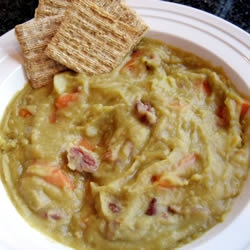
Posts Tagged: meal
Changes to Soil Following Application of Mustard Seed Meal and Crab Meal
Below is a look at what happens to a soil following application of mustard seed meal (MSM) at 1.5 T per acre and mustard seed meal (again 1.5 T per acre) + crab meal (500# per acre) as separate treatments two weeks after fumigation with Ally 33 (67% AITC, 33% chloropicrin applied at 340# per acre on Oct 7).
Grower standard was methyl bromide/chloropicrin applied at 350# per acre. Planting took place Nov 3.
A soil sample taken on Nov 7 did not show differences in soil aspects analyzed between any of the treatments, although ammonium - N concentrations were surprisingly high (30 ppm and up) and nitrate - N numbers tended to be quite low (6 ppm and below).
Remarkably, look what has happened in the 4 weeks since that sample. Bear in mind that the grower has since sprinkled overhead several times and we had a good amount of rain as well. Commenting continues below the tables.
Unless otherwise indicated, units are in ppm of dry soil.
Table 1A. Soil analysis from December 7, 2016
|
Sample |
pH |
EC (dS/m) |
Nitrate – N |
Ammonium – N |
|
Methyl bromide grower standard |
7.4 |
0.9 |
11.3 |
4.7 |
|
Mustard Seed Meal |
7.1 |
1.7* |
34* |
20* |
|
Mustard Seed Meal + Crab Meal |
7* |
1.8* |
32* |
12* |
*Student's T-Test; different from grower standard at 5% level of significance.
Table 1B. Soil analysis from December 7, 2016
|
Sample |
(P) |
(K) |
(Ca) |
(SO4) |
(Mg) |
(Mn) |
Fe |
Na in meq/L |
Cl in meq/L |
|
Methyl bromide grower standard |
51 |
148 |
3100 |
278 |
178 |
8.9 |
18 |
1.9 |
3.2 |
|
Mustard Seed Meal |
54 |
190* |
2933 |
318 |
193 |
19.2* |
16 |
1.5 |
1.9 |
|
Mustard Seed Meal + Crab Meal |
60 |
185* |
3100 |
589 |
150 |
20.1* |
16 |
1.5 |
1.9 |
*Student's T-Test, different from grower standard at 5% level of significance.
One sees immediately that the pH has fallen, even significantly, in plots treated with mustard seed meal and mustard seed meal + crab meal. This is not surprising, since in the month's time since the initial sample on Nov 7, the ammonium has clearly nitrified (releasing 2 H+ ions per molecule, in turn acidifying the soil) creating a big pool of nitrates which have gone up significantly over the grower standard.
EC has gone up a bit due to the higher nitrates (NOT because of sodium or chloride), and interestingly levels of manganese (Mn) a mineral sensitive to acidification apparently, have soared in both MSM treated plots. Levels of available potassium (K) have gone up significantly also in MSM treated plots.
Quite interesting on the whole. By the way, a soil report like this makes for pretty good reading, and outside of the EC which is for the time being a little high in the MSM plots, all the other numbers are right where I like to see them.
Stay tuned on this one; we are following all of this trial through the season.
Dealing with Pantry Pests
[From the July 2015 issue of the UC IPM Retail Nursery and Garden Center IPM News] Pantry pests...
Time for soup!
She loves to make soup-especially cream of yesterday.—Milton Berle
Suddenly, as I ride my bike to work in the morning, I’m not wearing my capris and sandals, I’m wearing pants, shoes and a jacket—sometimes even gloves! The scarf and ear muffs are not long behind—we have definitely hit fall in northern California!
And fall makes me want to cook comfort food, and what’s more comforting than soup. Not only is soup easy to make, nutritious, delicious, filling and thrifty, you can hide, I mean use, lots of veggies, even some leftovers. Soup is very forgiving. If you add too many ingredients, it just becomes stew!
What’s more elementary than putting a bunch of ingredients in a pot and covering it with some kind of liquid? Nothing, and that’s why soup has been around as long as there was some kind of vessel to make it in. Soup developed regional differences because of what was available where you lived, but it was always a hearty meal and easily digested. Enjoyed across cultures, classes and varying degrees of health, soup remains a classic meal.
Soup is so accessible and inexpensive, it is often used in successful fundraising activities. Across the country “Bowls for Charity” or “Empty Bowl” fundraisers have become popular for, what else, soup kitchens. The concept was initiatied in 1990 when a group of Michigan High School students made ceramic bowls to fill with soup for a food drive. It was so popular, it blossomed into a nationwide fundraiser, focusing on ending hunger. Generally, participants purchase a ticket, choose a handmade bowl, and enjoy a simple meal of soup (often donated by local restaurants), bread and water. The mission of the fundraiser is to remind people that many people have empty bowls, with no food to feed their families. In Yolo County, we have the Empty Bowls luncheon, hosted by the Yolo Wayfarer Center in October; here in Davis we have the annual Souper Bowl in February, hosted by the Davis Co-op, with proceeds going to the Elderly Nutrition Program.
So what’s a good soup to make and share? Well, it could be something thick and hearty like this highly rated Split Pea soup recipe from allrecipes.com:
Split Pea Soup
|
 |
In a large stock pot, cover peas with 2 quarts cold water and soak overnight. If you need a faster method, simmer the peas gently for 2 minutes, and then soak for l hour.
Once peas are soaked, add ham bone, onion, salt, pepper and marjoram. Cover, bring to boil and then simmer for 1 1/2 hours, stirring occasionally.
Remove bone; cut off meat, dice and return meat to soup. Add celery, carrots and potatoes. Cook slowly, uncovered for 30 to 40 minutes or until vegetables are tender.
Or something a little more exotic, but still simple, from epicurious.com, like:
Ginger Scallion Egg-Drop Soup
|
 |
Smash 3 scallions and cut into 2-inch pieces, then put in a 2-quart saucepan with water, broth, ginger, and 3/4 teaspoon salt. Bring to a simmer, and then poach chicken at a bare simmer, uncovered, until just cooked through, 12 to 15 minutes. Transfer chicken to a cutting board and let broth steep, covered, 10 minutes.
Meanwhile, chop remaining 3 scallions and shred chicken.
Discard scallions and ginger from broth and bring to a brisk simmer. Add beaten eggs in a slow stream, stirring constantly. Remove from heat and stir in scallions, chicken, and white pepper (if using). Serve drizzled with sesame oil.
Or one of my favorite quick and healthy go-to weeknight soups:
Fish Stew
- 1 diced onion
- 3 diced white, red or yellow potatoes
- 2 cups chopped celery
- 3 cups water
- 1 pound diced white fish
- ½ lb. shrimp or scallops (or another ½ lb. white fish)
- 2 cups chopped broccoli
- 2 cups chopped cauliflower
- 1 1/2 teaspoons salt
- 1/2 teaspoon ground black pepper
- 1/2 teaspoon crushed dried marjoram
- 1/2 teaspoon crushed dried basil
- 3 tablespoons all-purpose flour
- 2 cups milk (I use skim, and it’s fine, but it would be richer if you used 2% milk)
In a large, deep skillet, boil onion, celery and potatoes in water for 10 minutes. Add flounder, broccoli, cauliflower, salt, pepper, marjoram and basil.
In a separate bowl, mix flour with milk and slowly add to soup mixture while stirring continuously. Reduce heat and simmer for about 15 minutes. Add shrimp and/or scallops; cook 3-5 minutes more.
